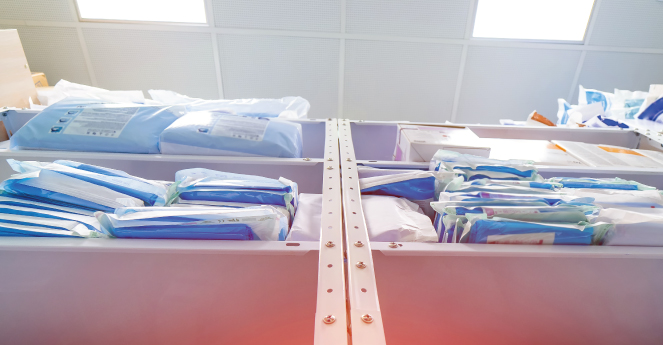Even though two years have passed since the COVID-19 pandemic began, hospitals are still feeling the effects. Staffing shortages continue to be a major issue, with one study showing that hospital employment is recovering slower than the rest of the economy with levels still below February 2020 (Altarum, 2022). Adding to this strain is the disconnected healthcare supply chain. As David Lefkowitz, Director of Market Strategy at Terso Solutions explained, “We hear quite a bit about continued issues hospitals are dealing with from the pandemic in two main areas – one is staff shortages, and the other is supply chain issues.” This points to the underlying need for new solutions instead of continued reliance on manual processes.
Challenges in Hospital Supply Chain Management
Historically, hospitals have relied on very labor-intensive processes for managing inventory, such as requiring staff to check supply rooms multiple times per day. “Most of the time the supply rooms are scattered about the hospital,” Lefkowitz described. “Staff members have to physically go to each supply room and look at what’s on the shelf. That is a huge time killer.”
Without automation and unified systems that efficiently gather information about supplies and equipment, hospitals remain chained to these manual processes. In fact, the lack of unified systems ties to issues of staff burnout with 55% of clinicians identifying this issue as a major operational problem (Zebra, 2022). The strain on staff and continued use of time-consuming, manual processes has led many hospital leaders to look for technology solutions that can fill these gaps.
In addition, having real-time information is critical to a hospital’s ability to prepare for the next crisis. However, only 4 in 10 hospital leaders say they are currently using real-time location technology, despite recognizing the importance of these tools for improving workflow, gaining greater quality control, tracking equipment, and supporting other critical processes (Zebra, 2022). “Hospitals are still using barcode scanning, which is better than manual counting on a spreadsheet, but it’s still a slow and cumbersome process,” Lefkowitz explained.
Hospital Leaders Shift from Reactive to Predictive by Leveraging Technology
Hospital leaders recognize the need to shift from reacting to crises to predicting needs and see technology as a central tool to achieve this. According to a survey of 500 senior-level hospital leaders, 95% plan to increase IT spending in the next year with the goal of creating a connected healthcare ecosystem (Zebra, 2022). “If you have technology that provides real-time information on replenishment needs before there is a stock-out issue, this would require fewer people to manage -allowing them to be more efficient and spend time on other priorities,” Lefkowitz pointed out.
One leading area where hospitals plan to implement workflow automation is supply chain management. This includes technology to help with locating critical equipment and medical supplies within a healthcare system. “Having visibility within the hospital as well as across different hospitals within a network is so critical,” Lefkowitz explained. “Technology like RFID allows you to count thousands of items at once and create a chain-of-custody when items are moved throughout a facility.”
RFID Leads the Way in Addressing Hospital Supply Chain Challenges and Automation Needs
RFID and real-time location systems sit at the top of hospital leaders’ wish lists. “Technology like UHF RFID enables real-time information and enhanced visibility to help streamline processes and ultimately boost efficiencies across hospital supply chains,” Lefkowitz described. Because of the accuracy and efficiency to be gained, 75% of hospital leaders plan to implement location technologies like RFID in the next year (Zebra, 2022).
Technology companies who seek out the voice of the customer and ensure solutions meet customer needs are critical in this space. “Oftentimes our customers reach out to us to help them solve complex problems. We have a lot of expertise in this area and it’s in our corporate DNA to help them find the right solutions,” Lefkowitz stated. “Terso has over 16 years of RAIN RFID experience and we pride ourselves on bringing innovative solutions to the market that directly address the challenges they experience.”
Resources:
- Zebra Technologies. Smarter, More Connected Hospitals Vision Study. Retrieved July 24, 2022, from https://connect.zebra.com/healthcarevs_us_en
- Altarum (2022). (issue brief). Health Sector Economic Indicators. Retrieved July 24, 2022, from https://altarum.org/publications/february-2022-health-sector-economic-indicators-briefs.








